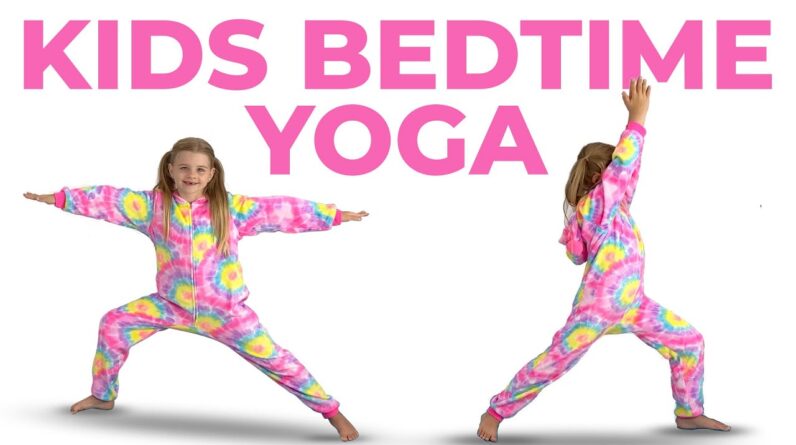I’m going to tell you what you need to do to achieve that highly desirable goal of body recomposition. Let’s look at this one piece at a time with building muscle first, this is actually the hardest part and usually the side that most people fail to optimize.
Muscle takes time and effort to build at a minimum. You want to be working out three times a week with weights for that first year of training, when you’re getting those glorious, newbie gains, you can probably get away with doing just two weight training sessions per week.
But after that time, three to five days is really what you’re after and they don’t have to be really long sessions of 40 to 45-minute solid weight, training workouts, allowing some time for warm-up and a little bit of time for a cool down at the end Is probably going to be enough weight training stimulates whatever muscle you have to stay and it helps you grow new muscle and the best way to do this is through progressive resistance training.
As you get stronger, you simply increase the weight that you’re lifting. You can also do this with bodyweight exercises as well, but then you have to have a really good idea of which exercises are more challenging and will get you to progress.
A lot of them will start off with that three sets of 10 rep structure and that’s not bad, but you do have to make sure that you’re increasing the weight. So if you’re using dumbbells, you go from 10 to 12 to 15-pound dumbbells as you get stronger.
Obviously, you won’t be able to do this every session, but at least every few weeks you should be going up if you’ve been training for a long time. You’Re gonna have to change up your exercises as well.
In order to make this Progressive there’s only so much strength and muscle you can build with a particular exercise. You want to focus on the compound lift so that with squats deadlift bench press pull-ups, dips, shoulder press you’re working on more muscle groups at once so that you’re building muscle throughout your body.
The combination of all these exercises also helps stimulate the ABS as well. So for those of you looking to eventually have a six-pack weight, training is going to help contribute to that. The other part, of course, is the fat loss which we’re going to talk about very soon now, there’s nothing wrong with isolation exercises like bicep, curls or tricep.
Kickbacks, but if that’s all you’re doing you’re not going to be able to maximize your muscle growth to nutritionally support the recovery and growth of your muscles, you need to eat enough protein.
I generally recommend a range of 0.7 to 1 gram of protein per pound. Of body weight per day, so if you’re 170 pounds up to 170 grams of protein per day, if you’re, 40 or 50 pounds from your target weight, use your target body weight to determine your protein goal.
So if you weigh 250 pounds, but you want to get to about 200 pounds – you want to get from 140 to 200 grams of protein per day. Otherwise, it becomes really challenging it’s so much protein that for most people, it’s really hard to get in, especially while keeping the calories relatively low in order to produce a calorie deficit and get that fat loss in order to minimize added fat gain because we’re definitely not Going to forget about the fat loss part of our goal, you want to focus on leaner cuts of protein.
I rely mainly on chicken, turkey, eggs, and low-fat Dairy, like cottage cheese, cheese, and Greek yogurt. I occasionally also add in plant sources like edamame or beans, and if I’m ordering a really nice Thai meal, then usually I’ll include some tofu in there, along with the shrimp that I like as well now.
Let’s move on to fat loss and the type of training that you want to be doing, in addition to the strength training that we already talked about, you probably want to add in a bit of cardio as well. Concurrent training is using a combination of weight, training, and cardio within your plant.
This type of training is ideal for optimizing body composition. That means maximizing your muscle mass while reducing your body fat levels. This doesn’t mean that you have to do weight and cardio. On the same day, in fact, the more you spread it out, the better it’s likely to be because you have more recovery from one to the other up to 30 minutes a day of low-intensity, steady-state cardio will help minimize muscle loss.
So if you’re doing three days a week of weight training, then three days a week of this type of cardio, this can be anything that you really enjoy as long as it’s not very high in intensity. If you overdo, the cardio you’re more likely to experience interference, which means that it’s going to affect your weight, and training workouts – and that means you’re not going to be able to maximize your muscle growth because you’re not going to be able to lift the kind of Weights that you need to put it simply, you won’t get the most out of that leg.
Workout if your legs are too tired from running interference from cycling or walking, is a lot less common than from running, because running is higher intensity. So if you’re doing three days a week of weight training, you can do three days a week of this type of cardio and that’s a pretty good plan.
It doesn’t mean that you have to be in the gym six days a week. You can combine the cardio with weight training one day you might want to do a bit of cardio, say 20 minutes after your weight training session.
I prefer weight training first, so that you’re as fresh as possible for the weights, but some people like to be really warmed up for their weight training and that’s okay too. So just do whatever works for you.
If you’re gentle with your cardio, it’s unlikely to make any difference for your weight, training workout, an even easier option, is to just add walking to your daily routine by being Physically Active. This way helps you burn off some calories, but it also just makes you feel more.
Energized, honestly, at this time of year, I’m not nearly as enthusiastic about walking as I normally am in the summertime, when the weather is better. If the weather isn’t to your liking, you can use a treadmill or you can even walk around a mall.
If you’ve got one near you, it’s really important to gradually increase your cardio even with walking if you’re completely sedentary. You don’t want to start off with an hour of walking every day that can result in overuse injuries, shin splints or plantar fasciitis build yourself up from where you are a little bit at a time.
If you’re already fit, that’s fine, you can add it on now. Some people really enjoy high-intensity intervals, training, or hitting now. This can definitely help with fat loss as long as you’re pretty fit, to begin with, and it’s not going to fully exhaust you, even if you are very fit one to two short hit sessions a week.
Is it the absolute maximum? You want to do anything more than that and it’s really going to impact your recovery and your ability to push those weights. That’s where your muscle growth is going to come from and that’s what you want to focus on. It’s not so if another activity takes away too much from your muscle building, you’re not going to optimize your muscle growth, probably about 90 percent of your fat loss result is going to come through nutrition.
So you can’t avoid it unless you have several hours a day to work out, you’re gonna have a hard time burning off all those extra calories. Now you may be one of those lucky ones: who’s going to start losing weight just by adding weight, training, and some cardio?
This is possible if you are a beginner and you’ve been sedentary up until now, but I’m going to assume that you’ve been training for at least a little while this is where it gets a bit more tricky with my clients and in my online course I have Two approaches that I use one is quantitative and involves calorie, counting and the other is qualitative and just means choosing the right kind of foods and having certain kinds of foods.
Less often it comes down to energy balance either way. So, whether you track calories or not, is down to your personal preference. If you are counting calories, you want to estimate your maintenance calories, and that means the number of calories that your body needs to sustain itself in its current state.
Most people with the goal of losing fat and building muscle will need to cut their calories a little bit, perhaps not by much, especially if they’re, adding additional training. I tend to start off with a moderate calorie deficit of about 250 calories and a maximum of about 500 calories per day.
You could use the numbers from some of these calorie-tracking apps. I prefer to do a rough estimate and just multiply your weight in pounds by 13 and that gets you approximately maintenance. It’s very rough and it’s just a starting point.
If you’re 200 pounds, then your maintenance calories are about 2600. So maybe you want to drop that down to 2300, so that’s a deficit of approximately 300 calories remember? This is only a rough estimate.
These are theoretical numbers. There’s another approach you can take, which involves using your own data. So what you do is you just start? Recording everything that you’re eating for about a week and most people tend to eat the same things day in and day out we’re pretty boring that way.
So after a week, you’re going to have an idea of how many calories you eat per day, you really want to average it out over the course of a week so that you know what’s happening. A lot of people will eat a lot less during the week and then a lot more on the weekend.
So you want to get a balance to find out what you’ve been eating up until this point and then what it’s going to take to get you fat loss. If you found out that you eat an average of 3 000 calories per day, then maybe drop it down to 2 700 calories, and that will be your calorie goal per day.
This will allow you to start losing fat and because you’re keeping your protein intake high you’re, going to maintain as much of the muscle that you’ve got and hopefully still build some as well. Protein has been shown to minimize muscle loss when you are dieting when you’re in a calorie deficit and losing fat, maintaining both weight, training, and keeping your protein adequate is the best way of retaining your muscle as you lose fat.
This is exactly what we want with the body: recomposition there’s another option: if you don’t want to use numbers at all, you can just take a look at your diet on a daily basis and decide that you’re going to increase the protein drink.
Some water adds some vegetables. All the common nutritional things that we recommend I’ve got videos about losing weight without counting calories. So if that’s what you want to do make sure you check those out as well now the goal of building muscle is going to take you time.
We look at that over the course of months or years, but fat loss. You should start to see improvements fairly quickly. If you’re not seeing anything within about three or four weeks, then you’ll need to modify chances are you’re going to need to reduce your calories.
A little bit more or perhaps add a little bit more walking in order to retain as much muscle as you can, while you’re losing body fat, you don’t want to lose any more than half to one percent of your body weight per week.
So if you weigh 170 pounds, you don’t want to lose more than about 1.7 pounds per week. Your weight varies from day to day, so a single weight for one day is not actually a good way of measuring this.
I like to use average weighing so you’re. Take the weight every single day for a whole week and then every single day for a second week, and you can follow the trends and then you see where your weight’s actually at so make sure you’re doing strength, training getting enough protein.
Getting the right amount of calories and throwing in a little bit of additional physical activity as well, that’s the fastest and most effective way of building muscle and losing fat at the same time, if you’re not sure how to put this into practice.








